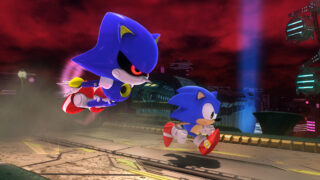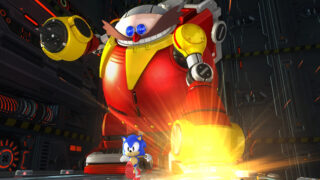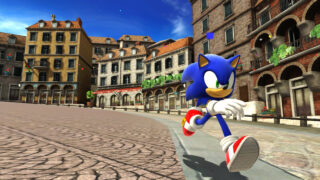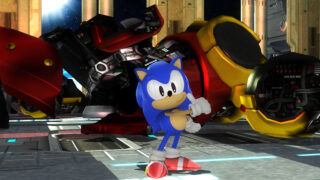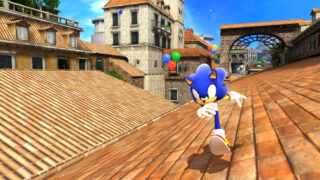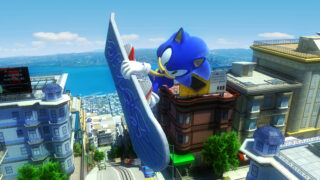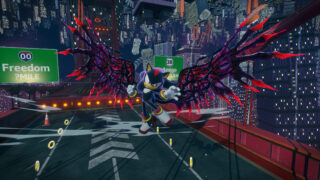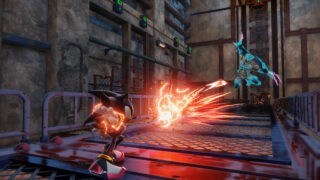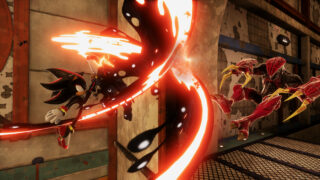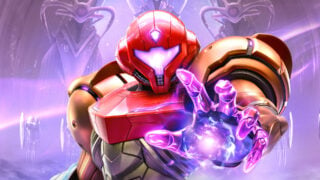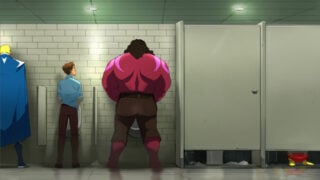Sonic X Shadow Generations delivers a double helping of fan service
Sonic Team combines a remaster with a new Shadow game to make a solid package
- Series producer
- Takashi Iizuka
- Key Credits
- Katsuyuki Shigihara (Director (Shadow Generations)), Shun Nakamura (Producer)

The first time Sonic Generations was released, the Sonic franchise was in a very different state to the one it’s currently in.
Having just started to emerge from a lengthy funk with numerous low-scoring games, Sonic Generations was the second critically-acclaimed Sonic title in a short period (following a year after the Wii-exclusive Sonic Colours).
Instead of trying to throw in all manner of distracting new gimmicks like talking swords, motion controls and werehog transformations, Sonic Team decided that the best way to take Sonic forward was to look back, resulting in a wonderful mis-mash of nostalgia and novelty.
Now, as Sonic Generations receives its second moment in the spotlight, Sonic’s standing in the world of video games is far more healthy, following a string of positively reviewed games, a pair of hit live action movies (with the third coming this Christmas) and Sega regaining its confidence to try new things – such as Sonic Frontiers – while still ensuring fans of the classics are acknowledged with the likes of Sonic Superstars.
As the name suggests, however, Sonic X Shadow Generations is more than just a straight current-gen port of the 2011 Xbox 360 and PS3 game. Instead, it’s essentially two games in one – a remaster of Sonic Generations and a brand new game called Shadow Generations.
Starting with the game most familiar to fans, Sonic Generations has been given the sort of remaster that may not initially doesn’t appear too groundbreaking until you put it side-by-side with the original.
Back in 2011, the game ran at 720p and 30 frames per second, so the modern upgrade to what appears to be 4K and 60fps is certainly a welcome one. Given the speed at which the game frequently whips past you don’t often get time to study the details, but this is certainly the best the game has ever looked.
(It should be noted that those who have played the game in recent years on Xbox consoles may notice less of a difference. Back in 2021 the Xbox 360 version got an update which added 4K and 60fps support for those playing it through backwards compatibility on Xbox Series X/S, so naturally that looks much closer to what we have here, even though the new release still surpasses it.)
There are a few occasional issues here where – perhaps due to the switch from 30 to 60fps – there’s an odd shuddering effect. This happens during the cutscenes when you free characters, and in certain other moments (such as the stage where you use Amy Rose’s hammer to give Sonic a higher jump) but these instances are rare enough that it’s not game-breaking in any way.
Overall, Sonic Generations remains just as entertaining as it was 13 years ago, and the combination of 2.5D classic Sonic stages and 3D modern Sonic stages applied to 10 zones from previous Sonic games provides players with a brilliant nostalgic look back at the series’ history up to that point.
We still get a kick out of playing the Chemical Plant Zone in 3D with a brand new soundtrack, and conversely love playing reimagined side-scrolling versions of Speed Highway and City Escape from the Sonic Adventure games.
The main event for Sonic fans here, however, is Shadow Generations. The second game provides all-new content, and for the most part it delivers.
The game’s plot runs parallel to that of Sonic Generations and there are occasional moments throughout where Sonic’s story is referenced. Without wishing to go into too much detail, it revolves around Shadow’s relationship with Gerald Robotnik and Maria, and how the collapse of time detailed in the main Sonic story is having an impact on Shadow too.
As in Sonic’s stages, Shadow Generations contains reimagined interpretations of classic stages from previous Sonic games including Sonic Adventure 2, Sonic Heroes and Sonic Frontiers. There are six zones represented in total and, as before, each features both a 3D stage and a side-scrolling 2.5D stage.
The latter differ somewhat compared to Sonic Generations, because whereas Classic Sonic was limited in the moves he could perform, here you’re using the same Shadow in both types of stage meaning he retains most of his abilities such as his speed boost and homing jump attack.
The main additions to the platforming gameplay in Shadow Generations are Chaos and Doom powers. The latter are acquired over the course of the adventure and give Shadow various new techniques, such as the ability to glide on the surface of water, the ability to swim through toxic goop and the like.
The Chaos powers, meanwhile, are always present and include Chaos Spears which can be fired at enemies from a distance. It’s the Chaos Control which is used most often, however – this briefly stops time, freezing some enemies and obstacles to make it easier for the player to navigate them. It also freezes the timer, meaning players looking for the quick clear times needed for S-Rank scores may want to make liberal use of it.
It’s the hub area that provides the biggest change in Shadow Generations, however, and will undoubtedly be the most divisive addition.
“It’s the hub area that provides the biggest change in Shadow Generations, however, and will undoubtedly be the most divisive addition.”
It basically takes the ‘White Space’ area from Sonic Genrations, which was a 2.5D hub world, and turns it into a separate 3D open world which plays a lot like one of the ‘Open Zone’ islands from Sonic Frontiers.
While the main aim is still to find the doors that lead to each of the game’s stages, the open world itself has its own separate tasks and mini-games, as well as a traversal system made up of springs, grind rails and loops which evolves as the player makes progress.
For players looking for simple A-to-B platforming action, this may come as an unnecessary nuisance. The hub area in Sonic Generations was already a little fiddly, so turning it into a full 3D open world where reaching the next stage often requires some careful thought on which path to take might be frustrating.
The general gameplay loop in Shadow Generations is to complete a couple of Zones, which then reveal the door to the next boss. They then have to complete each Zone’s challenge stages to gain access to the keys which unlock the boss door.
It’s straightforward enough, and the extra traversal needed to reach each stage does add to the length a little, but Shadow Generations is not the longest game in the world – even though technically it’s not a standalone full-price game – and veteran Sonic players will reach the credits in their first run within about four hours.
As ever, though, the replay value is there for players who want to complete the game 100%, which will take far, far longer. As well as getting an S-Rank everywhere, every stage and challenge stage also has three hidden keys which have to be collected.
“Shadow Generations is not the longest game in the world – even though technically it’s not a standalone full-price game – and veteran Sonic players will reach the credits in their first run within about four hours.”
These keys unlock the 96 chests dotted around the open world, which unlock new artwork and music tracks. Nothing exhilarating, then, but at least it’s a way to extend the game’s length if you have the patience required to want to collect everything.
By and large, then, Sonic X Shadow Generations is a solid refresh for one of Sonic’s most well-loved 21st century games. Both games still suffer from many of the issues the 2011 release had – the side-scrolling stages still feel a lot floatier than 16-bit Sonic and the 3D sections are still prone to occasional glitches and annoying platforming moments.
That’s par for the course for this series, however, and it’s certainly been far worse in the past. As such, there’s very little to strongly dislike here, and while it’s perfectly possible to reach both games’ credits in less than 10 hours, the challenge in getting all the S-Ranks and finding all the hidden collectibles will ensure fans will play it for many tens of hours more.
Sonic X Shadows Generations delivers a sturdy one-two punch of fan service, providing a solid remaster of a 2011 favourite and coupling it with a new game starring a fan favourite. The usual 3D Sonic platforming issues remain and the Shadow Generations open-world hub may annoy those who disliked Sonic Frontiers but overall it's a brilliant package.
- Sonic Generations has never looked better
- Shadow Generations provides a great new set of stages
- Lots of collectibles to keep completists busy
- More lore for Shadow fans to enjoy
- Some may dislike the Frontiers-like hub in Shadow Generations
- The usual 3D Sonic platforming niggles


